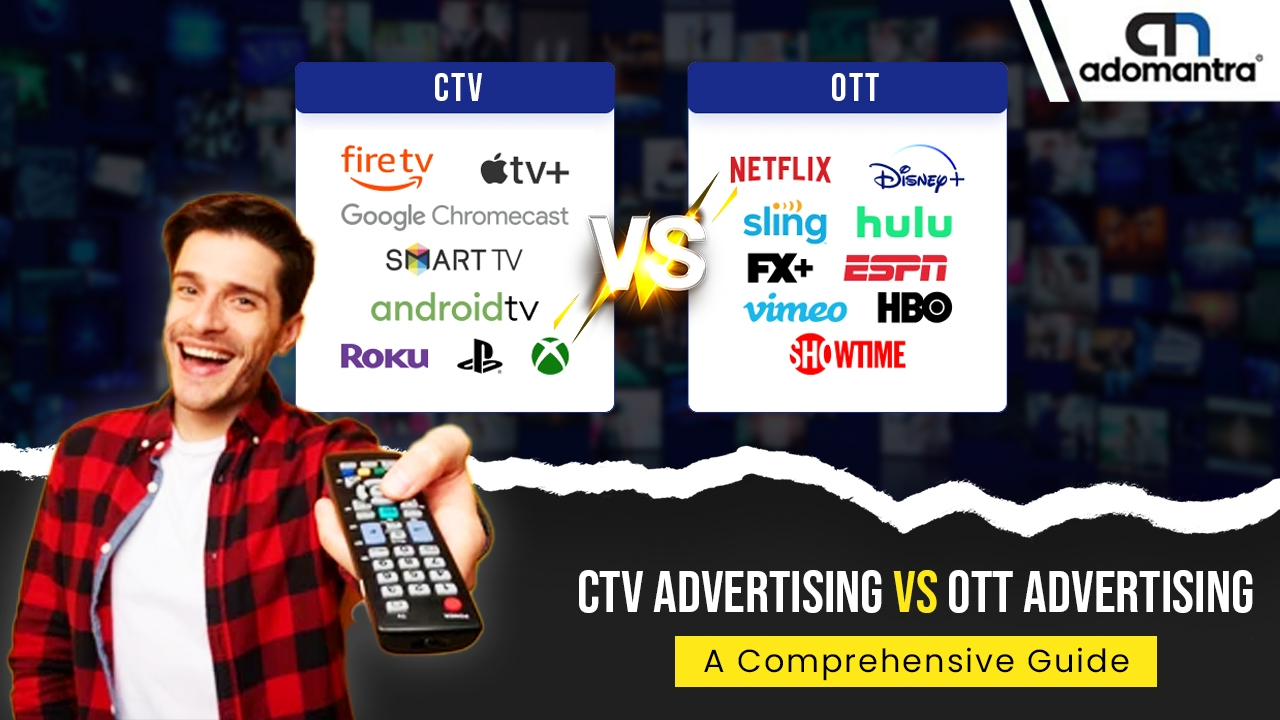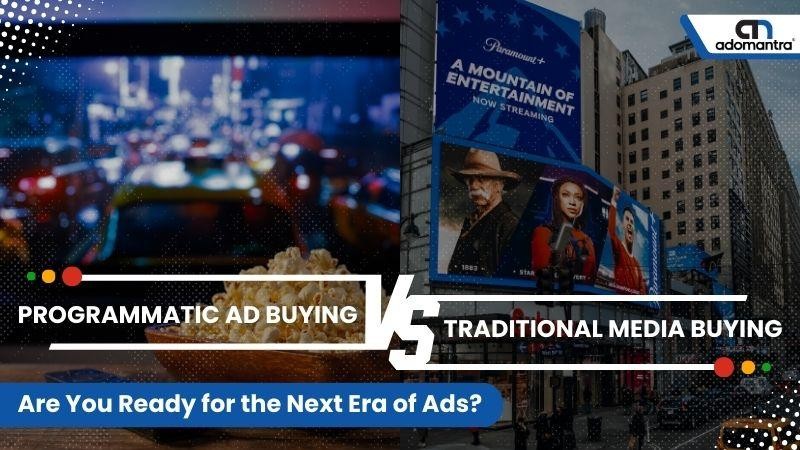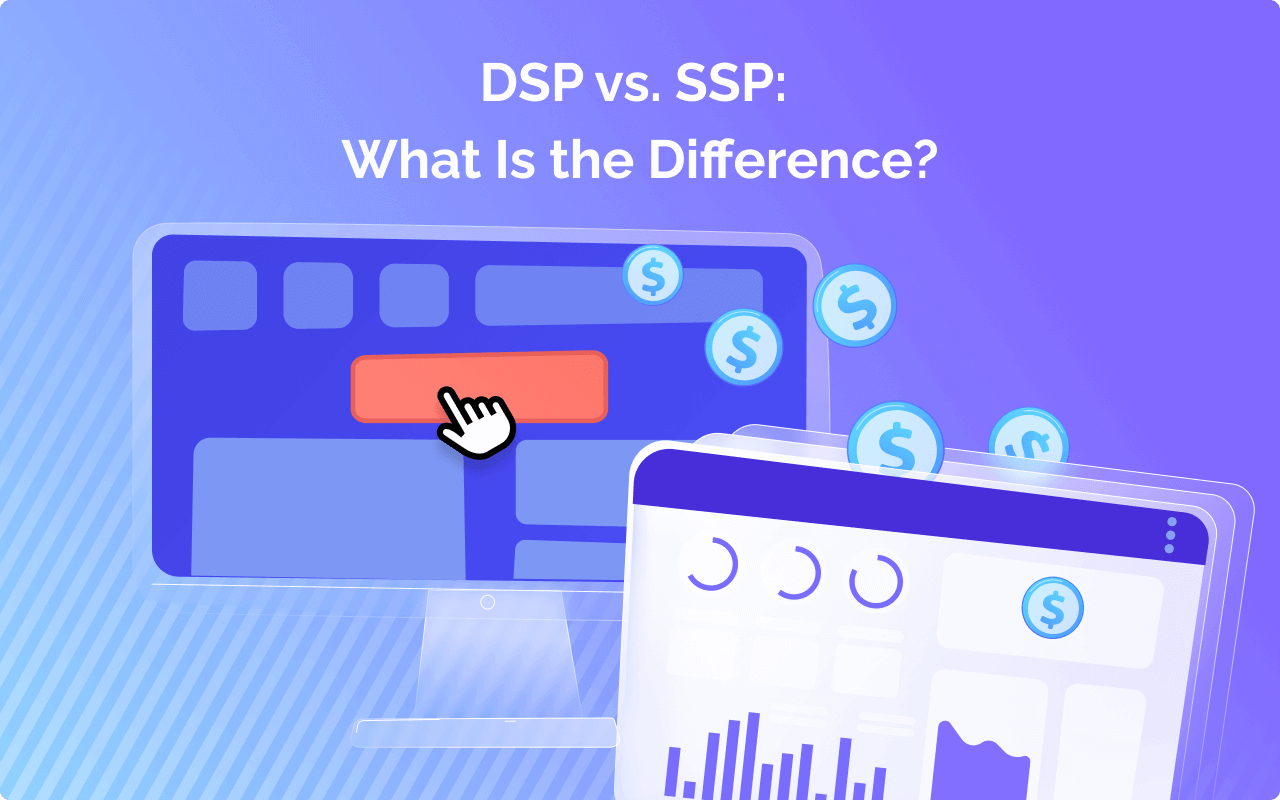
When it comes to modern digital advertising, the buzzwords CTV Advertising and OTT Advertising are impossible to ignore. Did you know that over 80% of households in the U.S. now have connected TVs, and billions globally are streaming their favourite content on OTT platforms? As marketers, understanding the difference between CTV and OTT advertising can help you choose the right approach to captivate your audience. At Adomantra, we’ve been pioneering bold and impactful advertising strategies since 2012, and we’re here to help you make sense of it all. Continue to read to know more!
Table of Contents
- What is CTV Advertising?
- What is OTT Advertising?
- Key Differences Between CTV and OTT Advertising
- Benefits of CTV vs OTT Advertising
- Platforms Supporting CTV and OTT Advertising
- Why Partner with Adomantra?
- Frequently Asked Questions
What is CTV Advertising?
CTV Advertising refers to delivering ads on internet-connected televisions. These include smart TVs, gaming consoles, and streaming devices like Roku, Amazon Fire TV, and Apple TV. With these platforms, brands can showcase their ads on the largest screen in the house, ensuring high visibility and engagement.
Key Features of CTV Advertising:
- Full-Screen Attention: Ads occupy the entire screen, ensuring viewers are fully engaged.
- Non-Skippable Ads: Many platforms serve ads that viewers can’t skip, maximising exposure.
- Advanced Targeting: Audience segmentation is based on demographics, household income, and viewing behaviour.
What is OTT Advertising?
OTT Advertising delivers ads via streaming platforms that bypass traditional cable and satellite TV. OTT platforms such as Netflix (ad-supported), Hulu, Disney+, and Amazon Prime Video allow viewers to stream content on multiple devices—from smartphones to tablets to TVs.
Benefits of OTT Advertising:
- Cross-Device Reach: Ads follow viewers across devices for seamless exposure.
- Highly Customised Ads: Personalised ad delivery based on individual viewer preferences and behaviours.
- Real-Time Insights: Metrics like impressions, clicks, and conversions can be tracked instantly.
Key Differences Between CTV and OTT Advertising
While they overlap, CTV vs OTT advertising differs in how ads are delivered and the devices they target. Here’s a simple comparison:
| Aspect | CTV Advertising | OTT Advertising |
| Device Type | Internet-connected TVs | All internet-enabled devices |
| Ad Formats | Full-screen, non-skippable ads | Pre-roll, mid-roll, banner overlays |
| Audience Targeting | Household-level targeting | Individual-level targeting |
| Interactivity | Limited interactivity | Includes interactive, clickable ads |
| Flexibility | Exclusive to TV screens | Accessible across multiple devices |
Benefits of CTV vs OTT Advertising
- Immersive Viewing: Full-screen ads create a cinematic, high-impact experience for viewers.
- Premium Audiences: CTV viewers are often higher-income households, making them valuable for luxury brands.
- Guaranteed Views: Non-skippable ads ensure your message is seen by the entire audience
Advantages of OTT Advertising
- Wider Reach: Ads reach viewers across devices like smartphones, tablets, and smart TVs.
- Personalised Delivery: Advanced targeting ensures ads resonate with individual preferences.
- Cost Flexibility: OTT offers a range of pricing models, making it accessible to businesses of all sizes.
Both CTV and OTT advertising have unique strengths, and combining them can amplify your campaign’s effectiveness.
Platforms Supporting CTV and OTT Advertising
- CTV Platforms:
- Roku
- Amazon Fire TV
- Apple TV
- Samsung Smart TV
- LG Smart TV
- OTT Platforms:
- Netflix (Ad-supported)
- Hulu
- Disney+
- Amazon Prime Video
- Peacock
Each platform offers distinctive opportunities for brands to connect with audiences.
Why Partner with Adomantra?
At Adomantra, we specialise in crafting strategies that make the most of OTT vs CTV advertising. Whether you’re looking to captivate audiences on a large screen or engage them across devices, we deliver impactful campaigns tailored to your goals.
Let’s create advertising that gets results. Contact us today, and together we’ll turn bold ideas into measurable success.
- CTV Pros: Immersive ads, premium audiences, guaranteed views.
- CTV Cons: Higher costs, limited interactivity.
- OTT Pros: Cross-device reach, personalised delivery, real-time metrics.
- OTT Cons: Potential ad fatigue due to frequent exposure.







